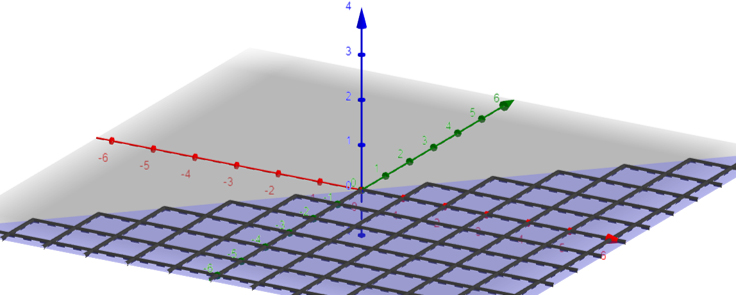
Concept explainers
(a)
Sketch the domain of the function
Answer to Problem 1CRE
Solution:Domain of the function is
Explanation of Solution
Domain: The domain of the function is defined as the set of complete possible values which will make the function work and gives output as real values.
Given: A function as
Formula:
a. Domain of Square root function, is given as
b. The expression in the denominator can never be zero.
Calculation:
Given function is
Domain of the function:
To find the domain, set the expression the expression inside the square root greater than equal to zero and the expression in the denominator not equal to zero.
And
And
Thus, domain of the function is
Graph is as follows:

Conclusion: Domain of the function is
(b)
The value of and for the function
Answer to Problem 1CRE
Solution: The value of and
Explanation of Solution
Domain: The domain of the function is defined as the set of complete possible values which will make the function work and gives output as real values.
Given: A function as
Calculation:
Given function is
Conclusion: The value of and
(c)
A point such that for the function
Answer to Problem 1CRE
Solution: The point such that for the function Are and
Explanation of Solution
Domain: The domain of the function is defined as the set of complete possible values which will make the function work and gives output as real values.
Given: A function as
Calculation:
Given function is
Also,
Squaring both the sides, we get
Let ,
Then
Thus,
Points are and
Conclusion: The point such that for the function are and
Want to see more full solutions like this?
Chapter 15 Solutions
CALCULUS W/SAPLING ACCESS >IC<
- calc 3arrow_forward3. P 2. 1 -3-2-10 1 2 3 -2- X The graph of point P is given in the xy-plane. Which of the following are possible polar coordinates of point P? A Ⓐ(2, 2) (2, 1/1/1) B (2, 3) C Ⓒ =) (2√2, 41 ) D (2√2, 3) 4arrow_forwardThe graph of f' is below. Use it to determine where the local minima and maxima for f are. If there are multiple answers, separate with commas. 2 f'(x) N -5 -4 3-2-1 -1 -2 -3 -4 12 3 4 5 -x Local minima at x Local maxima at xarrow_forward
- The graph of f' is below. Use it to determine the intervals where f is increasing. -5-4-32 4- 3 2 1 -2 -3 +x 2 3 4 5arrow_forwardThe graph of f' is below. Use it to determine where the inflection points are and the intervals where f is concave up and concave down. If there are multiple inflection points, separate with a comma. 6 5 4 3 2 1 f'(x) +x -6-5-4-3 -2 -1 1 2 3 4 5 6 -1 -2 -3 -4 -5 -6+ Inflection point(s) at x = Concave up: Concave down:arrow_forwardThe graph of f' is below. Use it to determine where the local minima and maxima for f are. If there are multiple answers, separate with commas. f'(x) 4- -5-4-3-8-1 3 2 1 x 1 2 3 4 5 -1 -2 -3 -4 Local minima at a Local maxima at =arrow_forward
- Algebra & Trigonometry with Analytic GeometryAlgebraISBN:9781133382119Author:SwokowskiPublisher:Cengage
 Algebra and Trigonometry (MindTap Course List)AlgebraISBN:9781305071742Author:James Stewart, Lothar Redlin, Saleem WatsonPublisher:Cengage Learning
Algebra and Trigonometry (MindTap Course List)AlgebraISBN:9781305071742Author:James Stewart, Lothar Redlin, Saleem WatsonPublisher:Cengage Learning

